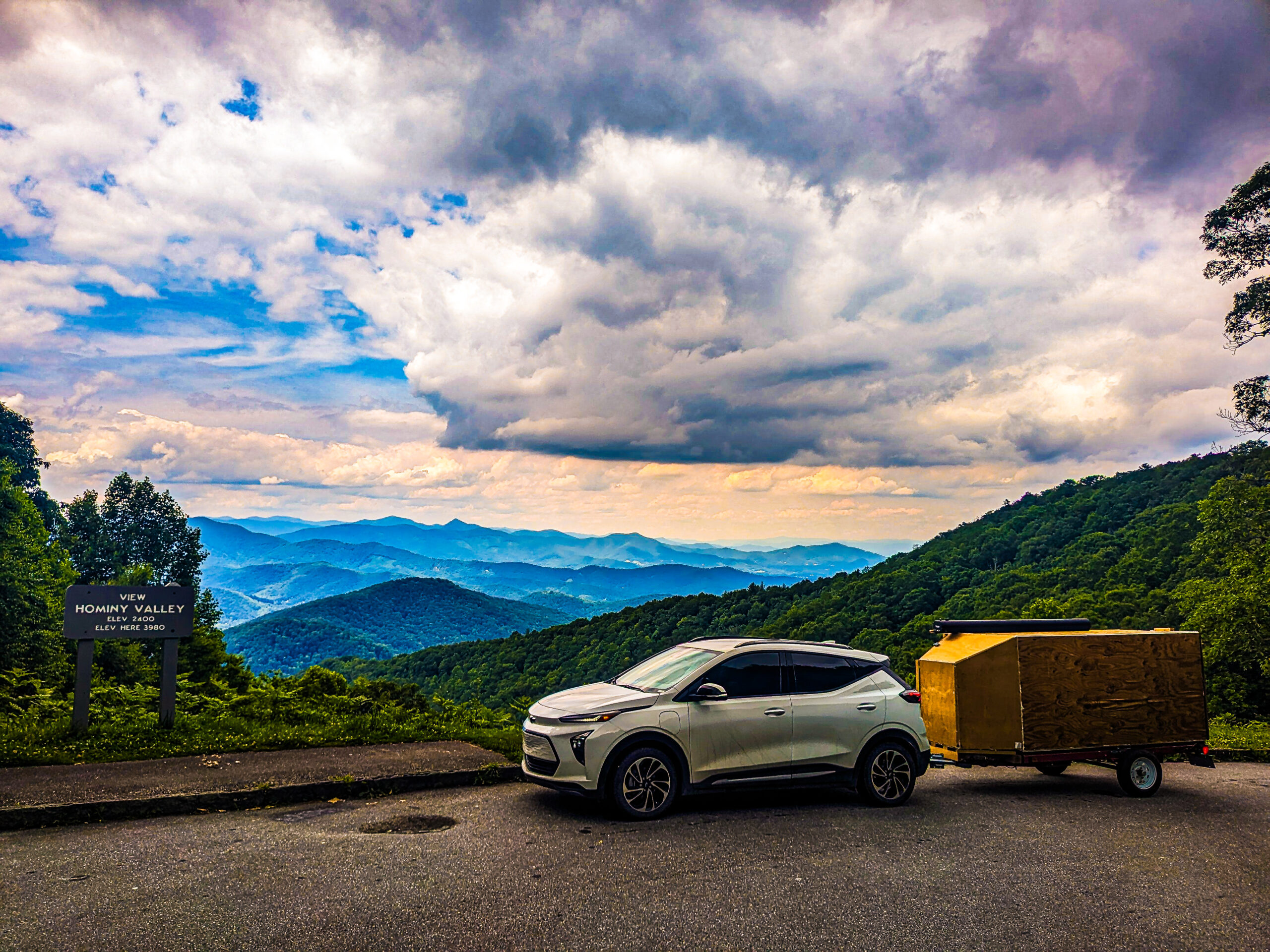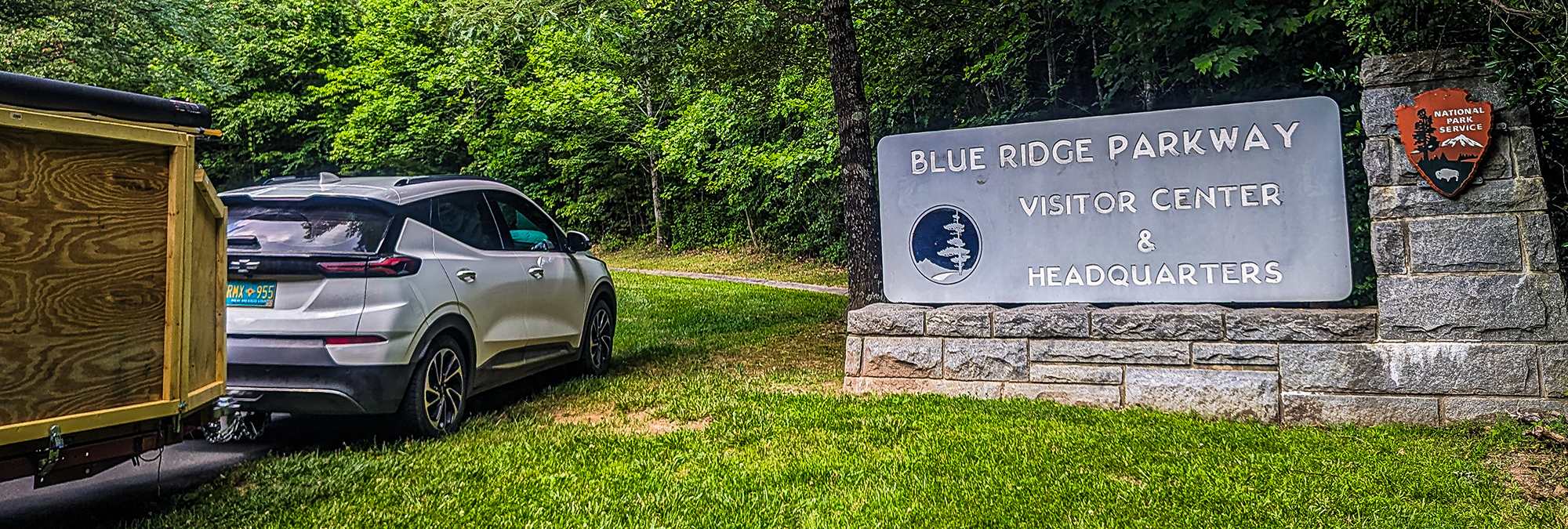Updated 6/21/24
In most national parks, the challenge of visiting in an EV is getting there and having enough charge to drive around inside or through the park. But, the Blue Ridge Parkway is a whole different animal. Instead of getting to the park, the road itself is the park!
As you make your way from Shenandoah National Park in Virginia to the Great Smoky Mountains National Park in North Carolina and Tennessee, you’ll find dozens and dozens of scenic viewpoints, visitor centers, campgrounds, and museums. Plus, there are great little towns, tourist attractions, state parks, and even the privately-owned Grandfather Mountain along the way.
Despite passing through many places where people live, including the outskirts of cities like Asheville, the National Park Service managed to give most of the route a very wild and remote character. The agency owns the land on either side of the road, and has kept it as wild as possible, leading to a feeling that you’re driving far from civilization for most of the route.

If you like getting your parks passport stamped, the Parkway is a great place to do that. Every visitor center, museum, and other stop with a gift shop has stamps for the Parkway and other things like the Overmountain Victory National Historic Trail.
Tackling This Route In An EV
Quick Facts and Tips:
- North Carolina and Virginia have been pretty good about putting charging stations in smaller towns. So, a number of towns along the parkway have rapid charging for EVs. A quick trip away from the parkway for a charge makes it possible to tackle the whole thing in just about any EV.
- Starting from the south, you’ll want to top up in Cherokee, NC (on the Eastern Cherokee Nation) to get to Asheville.
- After Asheville, a great next stop for EV fast charging is in Boone, North Carolina.
- As you make your way into Virginia, there are more small towns and stops right along the Parkway with EV charging, including one Rivian Adventure Network station that should soon open to all EVs.
- Trip planning software is recommended, but you’ll likely exceed the estimates that software spits out. A mix of going slower than the posted speed limit (there are many, many curves), stopping to see the views, and lots of regenerative braking makes for great EV range.
- You’ll likely need to find ways to force trip planning software to follow the route of the Parkway instead of taking faster roads. This can be accomplished with waypoints or guidepoints.
- The government campgrounds along the route do not offer hookups or any kind of EV charging. If you’d like to charge while you sleep, you’ll need to find private RV parks near the Parkway (there are many) or hotels/motels with EV charging. But, you can use your EV as a power source at these campgrounds if you plan extra charging in the cities/towns near the Parkway.
- It’s best to plan on traveling only 50-100 miles per day on the Blue Ridge Parkway. this will give you lots of time to take short hikes, appreciate the view, and visit visitor centers. Do not attempt to take the whole route in one day unless you do not plan on stopping for anything (including EV charging).
- It’s totally OK to visit only part of the parkway. Don’t feel pressured to grind through the whole thing and miss out on things. Do what you can safely do and have fun with on a given trip!
- Drive carefully and pay attention on this route, as you’ll regularly pass cyclists who are taking on the challenge of pedaling their way down and up the Parkway’s many slopes. Give cyclists plenty of room and be extra patient with them.

Links For Further Park and Nearby Information
- Official Parkway Website
- BlueRidgeParkway.org Travel Guide
- Some destinations along the parkway
- Great Smoky Mountains National Park (South end of Parkway)
- Cherokee, NC
- Asheville, NC
- Grandfather Mountain
- Boone, NC
- Roanoke, VA
- Waynesboro, VA
- Shenandoah National Park (North end of Parkway)
Here are some videos with more information about the Blue Ridge Parkway:
Featured image: My Bolt EUV pulling my custom camping cargo trailer at the headquarters of the Blue Ridge Parkway.

